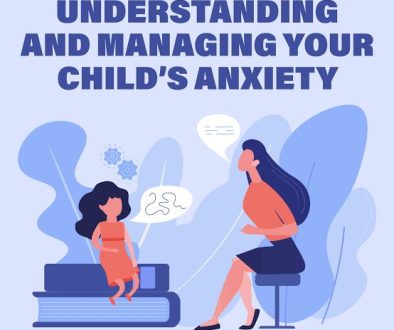Recognizing the Signs of Anxiety
Anxiety is a common mental health condition that can affect anyone, regardless of age, background, or circumstances. It can manifest in different ways, and recognizing the signs of anxiety is crucial to providing support and seeking professional help.
Common Signs of Anxiety:
1. Persistent worry or fear: Anxiety can cause individuals to worry excessively about everyday things, even when there is no apparent reason to do so.
2. Restlessness and irritability: People with anxiety may feel restless, on edge, or easily irritated, even by small things.
3. Difficulty concentrating: Anxiety can make it challenging to focus, leading to decreased productivity and performance.
4. Sleep disturbances: Anxiety can disrupt sleep patterns, leading to insomnia, daytime fatigue, or other sleep-related problems.
5. Physical symptoms: Anxiety can manifest physically, causing symptoms such as rapid heartbeat, sweating, trembling, or shortness of breath.
6. Avoidance behaviors: Individuals with anxiety may avoid certain situations, places, or activities due to fear or worry.
7. Rumination: Anxiety can lead to repetitive negative thinking, making it difficult to let go of worries or concerns.
8. Hypervigilance: People with anxiety may be constantly on the lookout for potential threats or dangers, even when there is no apparent reason to do so.
Recognizing Anxiety in Others:
1. Changes in behavior: Notice if someone’s behavior changes, such as becoming more withdrawn or irritable.
2. Verbal cues: Listen for verbal cues, such as expressing excessive worry or fear.
3. Physical symptoms: Look for physical symptoms, such as rapid heartbeat, sweating, or trembling.
4. Avoidance behaviors: Notice if someone is avoiding certain situations or activities.
Supporting Someone with Anxiety:
1. Listen without judgment: Allow the person to share their concerns without interrupting or judging.
2. Encourage professional help: Support the person in seeking professional help from a mental health expert.
3. Offer practical help: Help with daily tasks or errands to reduce stress and workload.
4. Encourage relaxation techniques: Suggest relaxation techniques, such as deep breathing, meditation, or yoga.
In conclusion, anxiety is a common mental health condition that can have a significant impact on an individual’s quality of life. Recognizing the signs and symptoms of anxiety is crucial to providing support and seeking professional help. By understanding the common signs of anxiety, recognizing anxiety in others, and providing support, we can help individuals manage their anxiety and improve their overall well-being. Remember, anxiety is a treatable condition, and seeking professional help is the first step towards recovery. With the right support and treatment, individuals can learn to manage their anxiety and live a healthier, happier life.



